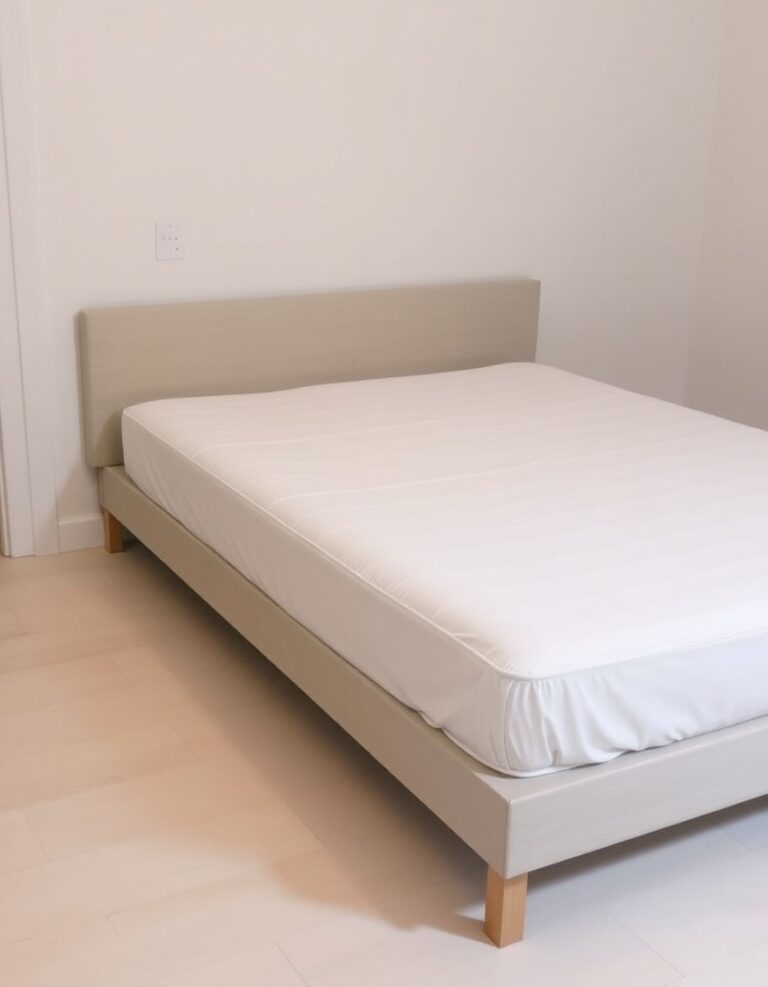A well-chosen living room accent chair can elevate your interior design from ordinary to extraordinary. These versatile furniture pieces do more than provide additional seating—they create focal points, express personal style, and complete the visual composition of your living space. Whether you’re refreshing your current setup or designing from scratch, understanding the various living room accent chair styles available helps you make informed decisions that enhance your home’s aesthetic appeal.
In this comprehensive guide, we’ll explore eleven distinctive living room accent chair styles that can transform your space. Each option offers unique characteristics, benefits, and design possibilities to help you find the ideal match for your home.
Why Living Room Accent Chairs Matter
Living room accent chairs serve as multifunctional design elements that balance practicality with style. Beyond their obvious seating function, these pieces:
- Create visual interest through contrasting forms, textures, or colors
- Define conversation areas within larger spaces
- Express personal taste and design preferences
- Provide flexible seating options for entertaining
- Complete furniture groupings and room layouts
The right living room accent chair can become a statement piece that anchors your entire design scheme or a subtle complementary element that enhances existing décor. Understanding the various styles available helps you make selections that align with both your aesthetic preferences and practical needs.
11 Living Room Accent Chair Styles to Consider
1. Wingback Chairs
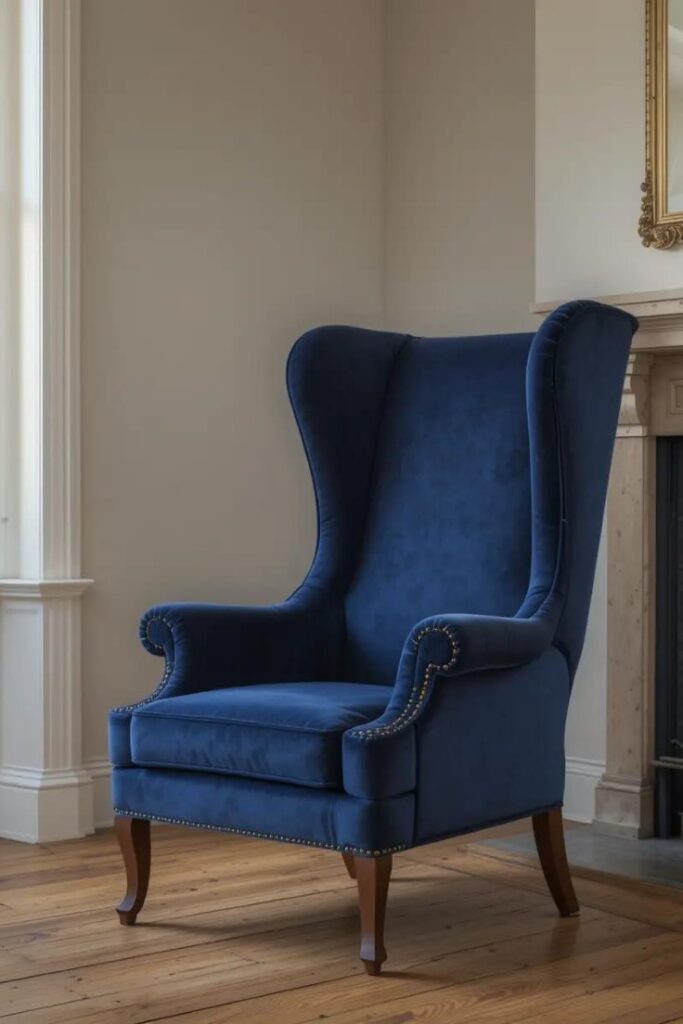
Wingback living room accent chairs feature distinctive side “wings” that originally served to shield sitters from drafts and fireplace heat. Today, these classic silhouettes provide:
- Architectural presence with their tall backs and pronounced shapes
- Visual weight that works well in large rooms or as anchoring pieces
- Traditional elegance that can be modernized through contemporary upholstery
Modern interpretations of wingback chairs often feature updated proportions and materials while maintaining the iconic profile. These chairs work particularly well flanking fireplaces or as standalone reading chairs in living room corners.
2. Swivel Chairs

Swivel living room accent chairs combine style with functionality through their:
- 360-degree rotation that allows interaction with different areas
- Versatile placement possibilities in multipurpose living spaces
- Availability in various styles from traditional to ultra-modern
These practical accent chairs work exceptionally well in open-concept spaces or rooms with multiple focal points. Their movement capability makes them particularly valuable in family rooms or entertainment-focused living areas.
3. Barrel Chairs
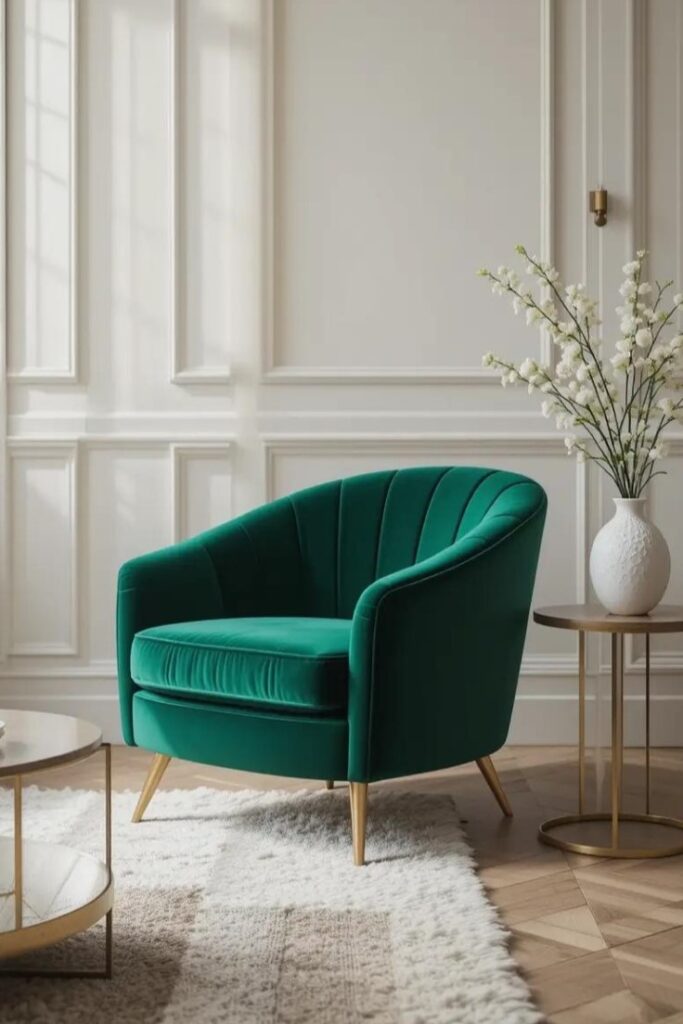
With their rounded, barrel-shaped backs that curve seamlessly into arms, barrel accent chairs create a:
- Cocooning effect that feels both protective and stylish
- Structured silhouette that adds architectural interest
- Versatile form that works in traditional and contemporary settings
These living room accent chairs often feature swivel bases, making them exceptionally functional in conversation areas. Their curved forms provide a welcome contrast to the straight lines of sofas and rectangular furniture pieces.
4. Slipper Chairs
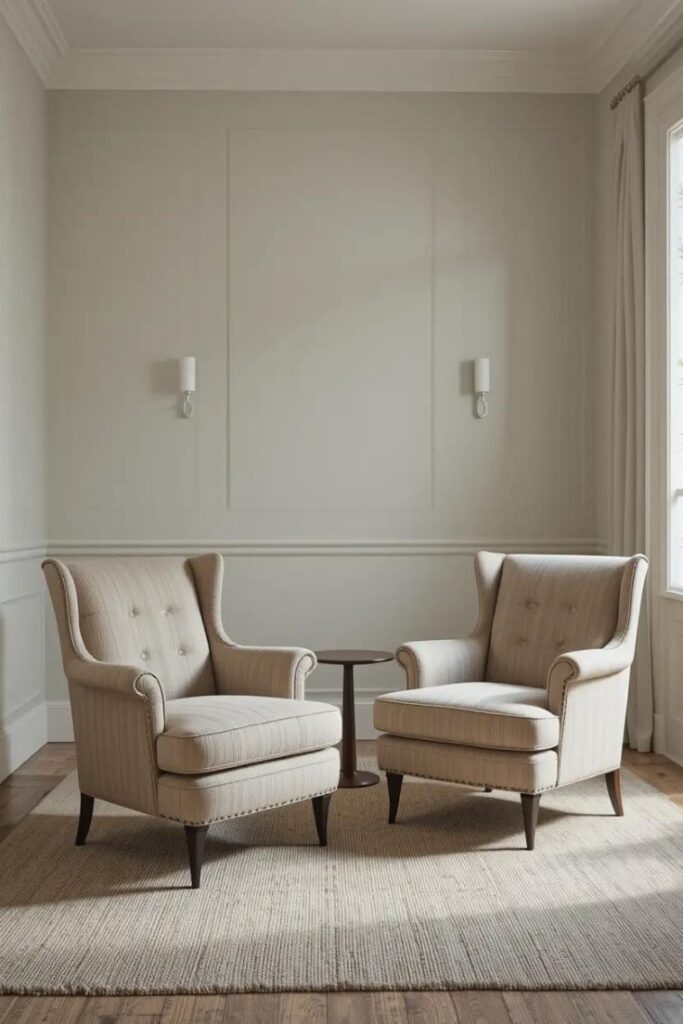
Slipper accent chairs feature an armless design with a clean profile, making them:
- Space-efficient options for smaller living rooms
- Versatile pieces that can be pulled into conversation areas as needed
- Elegant additions to living room corners or paired alongside sofas
Originally designed for Victorian ladies to sit while putting on shoes (hence “slipper”), these living room accent chairs now serve as streamlined seating options that can be easily incorporated into various design styles.
5. Mid-Century Modern Chairs
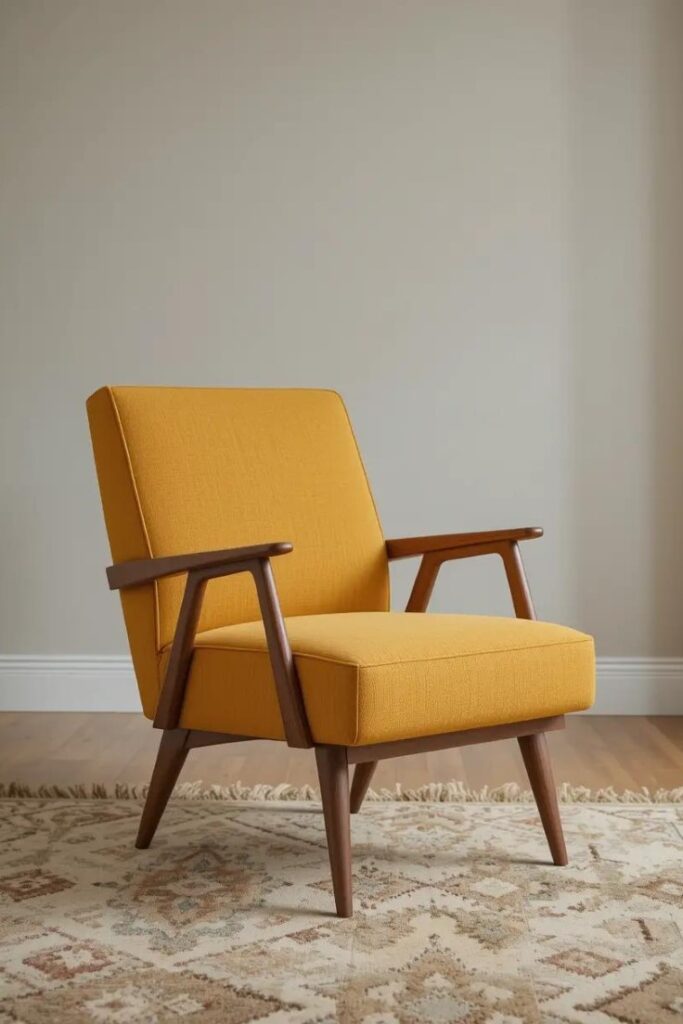
Mid-century modern living room accent chairs feature:
- Clean, organic lines inspired by 1950s and 1960s design
- Tapered wooden legs that create a light, elevated appearance
- Functional minimalism that eliminates unnecessary ornamentation
These chairs often incorporate materials like walnut wood, molded plastic, or bent plywood alongside tailored upholstery. Their enduring popularity makes them excellent investments that complement both contemporary and vintage-inspired interiors.
6. Bergère Chairs
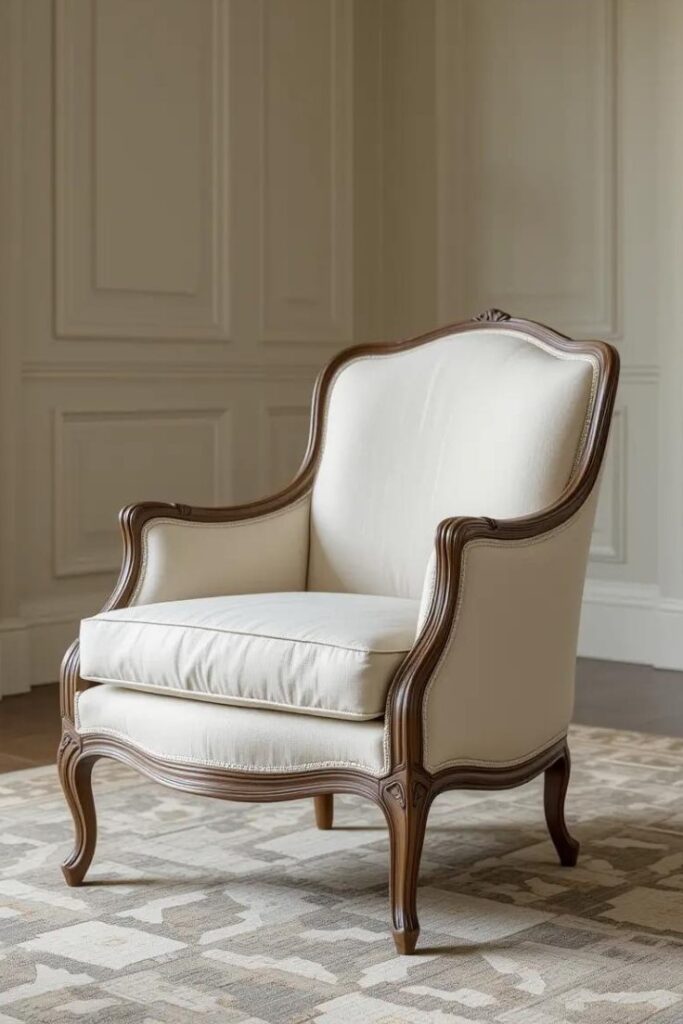
The Bergère living room accent chair represents French elegance with its:
- Enclosed sides and back upholstered within an exposed wood frame
- Generous, comfortable seat often paired with a loose cushion
- Refined detailing including carved wood elements and tailored upholstery
These sophisticated chairs bring a touch of European elegance to living spaces while providing comfortable, supportive seating. Despite their traditional origins, modern interpretations work surprisingly well in eclectic and transitional rooms.
7. Occasional Chairs
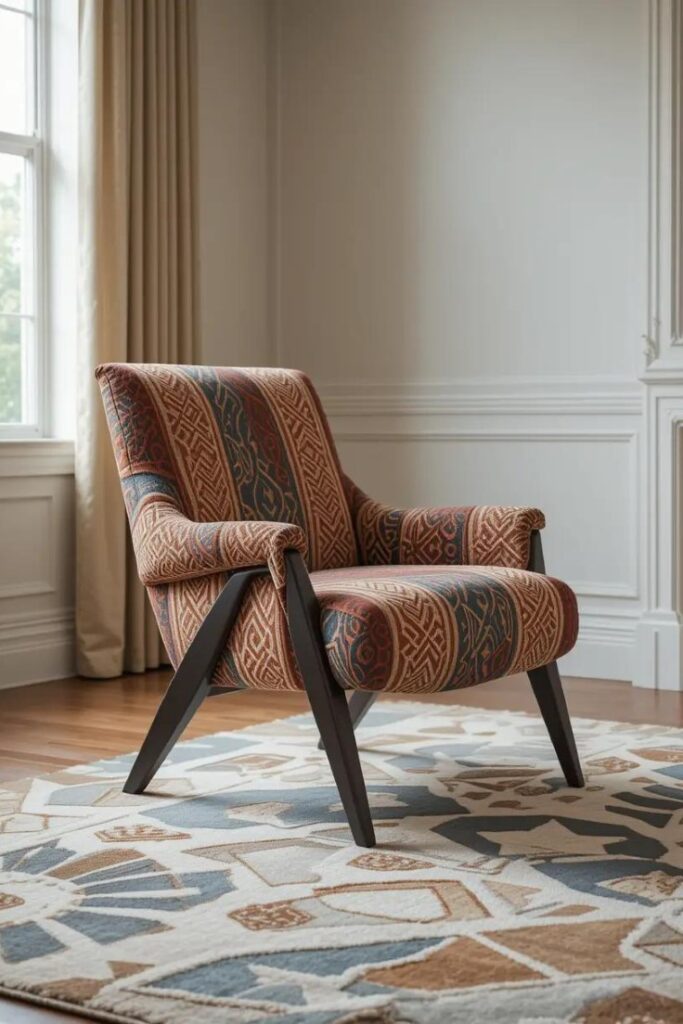
Occasional living room accent chairs offer flexibility with their:
- Lightweight, movable designs that can be repositioned as needed
- Sculptural forms that create visual interest
- Varied styles ranging from traditional to highly contemporary
These versatile chairs often feature distinctive frames or unexpected material combinations that make them true conversation pieces. Their smaller scale makes them ideal additions to living rooms where space efficiency matters.
8. Lounge Chairs
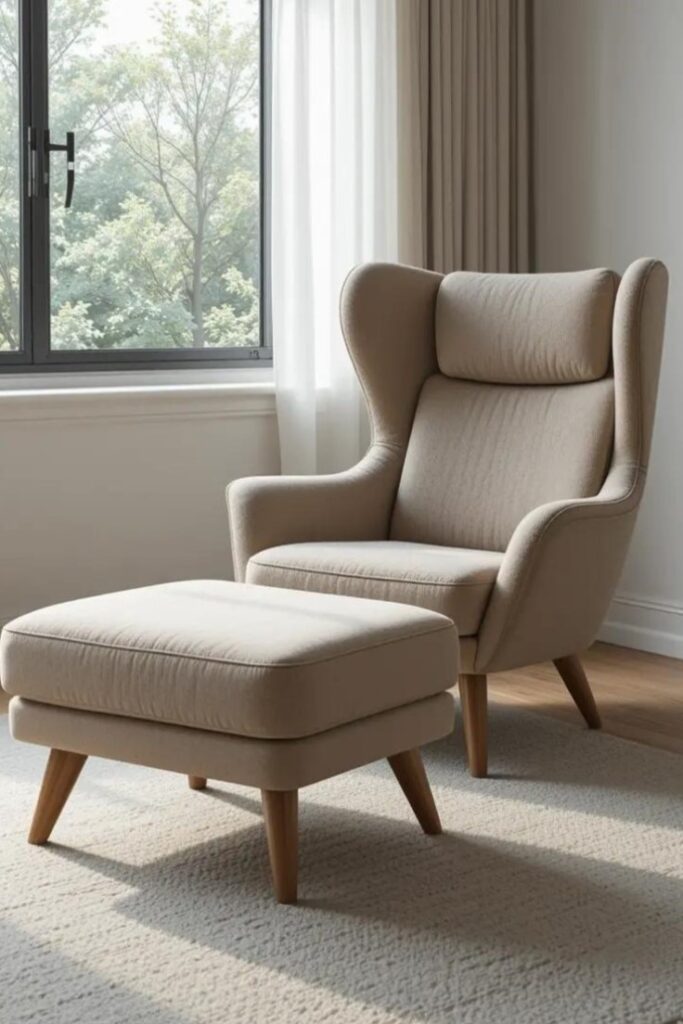
Lounge living room accent chairs prioritize comfort with their:
- Reclined seating positions that encourage relaxation
- Extended depths that accommodate various sitting postures
- Supportive designs that often include ottomans or built-in footrests
From classic Eames-inspired designs to contemporary innovations, these substantial chairs create dedicated relaxation zones within living spaces. Their generous proportions make them ideal focal points when properly scaled to your room.
9. Papasan Chairs

The Papasan living room accent chair features a:
- Distinctive round bowl shape supported on a circular base
- Casual, laid-back aesthetic that adds personality
- Cozy, nest-like seating experience with plush cushioning
These unconventional accent chairs add a playful, relaxed element to living rooms. Their unique silhouette creates immediate visual interest and serves as an invitation to comfortable, casual seating.
10. Reclaimed Style Chairs
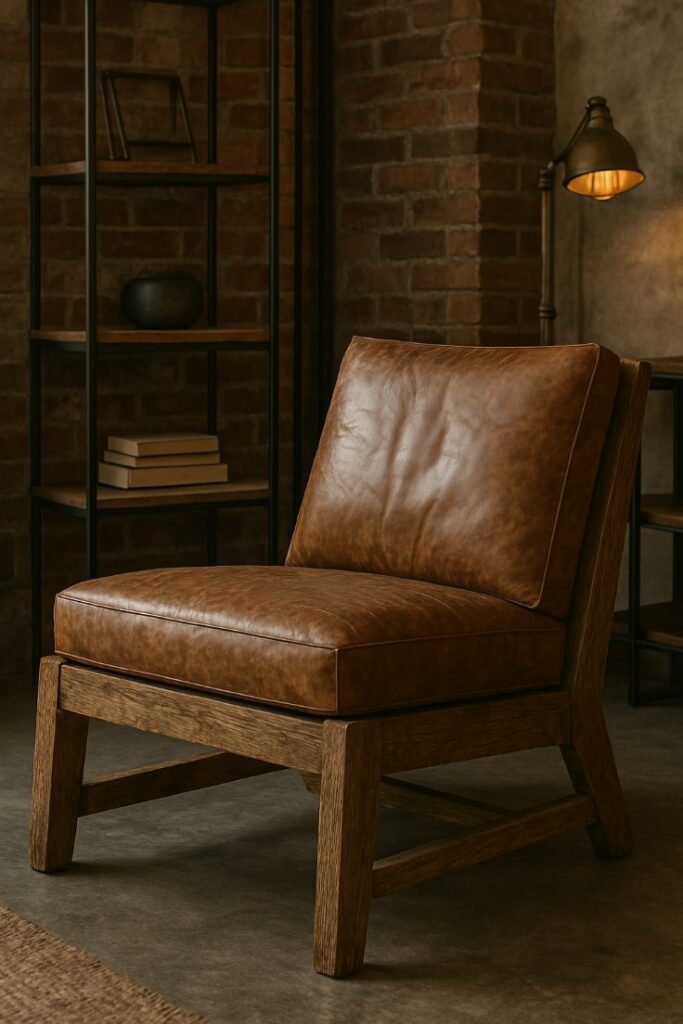
Reclaimed style living room accent chairs feature:
- Repurposed materials or designs inspired by salvaged elements
- Rustic or industrial aesthetics with visible textures and patinas
- One-of-a-kind character that adds authenticity to your space
These chairs often incorporate distressed woods, vintage-inspired metals, and textural fabrics that create rich visual interest. Their unique character makes them ideal conversation starters and focal points within living room designs.
11. Contemporary Statement Chairs
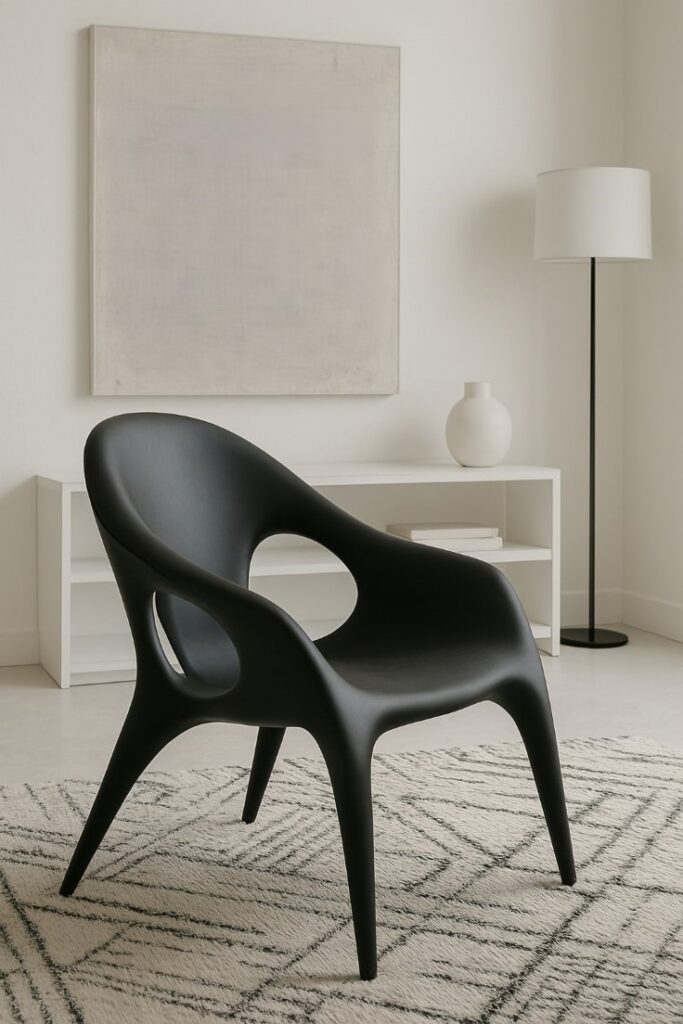
Contemporary statement living room accent chairs feature:
- Bold silhouettes that defy conventional form
- Innovative materials or unexpected combinations
- Artistic approaches that balance function with visual impact
These accent chairs serve as functional sculptures within living spaces, often becoming the centerpiece around which other design elements revolve. Their distinctive presence makes them ideal for minimalist rooms where fewer, more impactful pieces create maximum effect.
How to Select the Right Living Room Accent Chair
When choosing among these various living room accent chair styles, consider:
- Scale and proportion relative to your existing furniture
- Functionality needs based on how you’ll use the chair
- Material durability appropriate for your household
- Color and texture coordination with your overall design scheme
- Visual weight and how the chair balances with other elements
The most successful accent chair selections consider both aesthetic appeal and practical requirements. Take measurements, create mood boards, and when possible, test chairs for comfort before making final decisions.
Placement Strategies for Living Room Accent Chairs
Maximize the impact of your living room accent chair through strategic placement:
- Create conversation groupings by positioning chairs at 90-degree angles to sofas
- Define separate zones within larger living spaces using chair placement
- Balance visual weight by placing substantial chairs opposite heavier furniture pieces
- Highlight architectural features by positioning distinctive chairs near windows or fireplaces
- Establish reading nooks by placing chairs near windows or lighting sources
The right placement enhances both the functionality and visual appeal of your carefully selected accent chairs.
Mixing Accent Chair Styles Successfully
While matching pairs create formal symmetry, mixing different living room accent chair styles can generate dynamic, collected-over-time interiors. For successful mixing:
- Maintain consistency in at least one element (height, scale, color, or material)
- Balance traditional and contemporary pieces for tension and interest
- Consider the visual “conversation” between different chair forms
- Ensure all pieces meet similar quality and comfort standards
This approach creates living rooms that feel curated rather than formulaic, expressing personal style through thoughtful combinations.
Final Thoughts on Living Room Accent Chairs
Living room accent chairs represent an opportunity to express personality, enhance functionality, and elevate design in one essential furniture piece. By understanding the distinctive characteristics of various chair styles, you can make informed selections that transform your living space from basic to exceptional.
Whether you choose a classic wingback, a mid-century modern icon, or a contemporary statement piece, the right accent chair serves as both a functional necessity and a design highlight within your home.
Questions & Answers About Living Room Accent Chairs
How do I know what size accent chair is right for my living room?
Consider both the room’s dimensions and your existing furniture scale. Living room accent chairs should maintain approximately 18-30 inches of space between them and other seating for comfortable traffic flow. The chair should be proportional to nearby pieces—neither towering over nor disappearing beside them. For smaller spaces, armless slipper chairs or narrow-profile designs maximize seating without overwhelming the room.
Should accent chairs match my sofa?
Accent chairs don’t need to match your sofa exactly, but they should coordinate thoughtfully. Consider creating cohesion through complementary colors, similar wood tones, or consistent design periods. For a curated look, your living room accent chair might pick up a secondary color from your area rug or incorporate a texture that complements existing upholstery. The goal is for the chair to look intentionally selected rather than accidentally added.
How can I make a traditional accent chair work in my modern living room?
Create successful juxtaposition by selecting traditional chairs with clean lines and updating them with contemporary fabrics. A wingback chair in a bold geometric print or a Bergère chair upholstered in a solid neutral can bridge traditional forms with modern aesthetics. Alternatively, maintain the traditional upholstery but place the chair in a surprising context with modern accessories and lighting to create intentional contrast.
What accent chair fabrics are most durable for high-traffic living rooms?
For busy households, consider living room accent chairs upholstered in performance fabrics specifically designed to resist stains, fading, and wear. Crypton, Sunbrella, and similar treated textiles offer exceptional durability while maintaining style. Leather and high-quality synthetic leather alternatives develop character over time and can be wiped clean. Tightly woven natural fabrics with higher thread counts and stain treatment also perform well in active living spaces.
How many accent chairs should I include in my living room?
The appropriate number depends on your room size, layout, and entertainment needs. Most living rooms benefit from at least one accent chair to balance the sofa and create conversation areas. Larger spaces might accommodate two matched chairs opposite the sofa or multiple seating groupings with various chair styles. Consider how you use the space—if you regularly entertain, additional flexible seating becomes more important.
Can I use dining chairs as living room accent chairs?
Yes, certain dining chair styles can function effectively as living room accent chairs, particularly for smaller spaces or occasional additional seating. Look for dining chairs with comfortable seat depths, supportive backs, and substantial construction. Upholstered dining chairs with interesting silhouettes can work especially well, though they may require additional cushioning for extended comfort. This approach works best when the chairs feature design elements that elevate them beyond basic dining functionality.
How do I coordinate an accent chair with existing room colors?
Your living room accent chair can either complement or purposefully contrast with your color scheme. For a harmonious approach, select upholstery that incorporates colors already present in your space—perhaps pulling a secondary tone from your area rug or window treatments. For impactful contrast, choose a chair in a complementary color to your dominant palette. The chair might also introduce a new accent color that you can then echo in smaller accessories throughout the room for cohesion.





